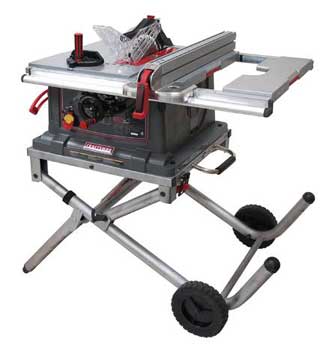
I am replacing my benchtop saw with a contractor’s saw. A Ridgid model, like most of the saws I have looked at, has the motor, which runs the blade via belt and pulleys, hanging out the back. But I also saw a Black and Decker saw that had the motor attached directly to the arbor – just like my benchtop. It had the same horsepower as the Ridgid, but was about $100 cheaper. Like a lot of weekend hobbyists, I have to consider price. Is there a significant difference in the performance and accuracy of one over the other? I know that replacing the motor is easier on a “detached” one, but I hope not to be replacing it any time soon. I also read about potential problems with bevel cuts on the detached ones because of the weight of the motor as it is tilted. Please help sort out the differences.
Rob Johnstone: I have used the Ridgid saw – a very nice contractor’s saw in my opinion – but have not used the Black and Decker model you mentioned. In general, most folks prefer belt driven saws over direct drive units when it comes to contractor’s saws. Another truism states that you get what you pay for. In the case of a these specific power tools, $100.00 is a lot of money and is likely indicative of a significant difference in construction. I don’t often recommend one tool over another because there are so many personal and subjective points to consider. But in this case a saying that my father was fond of using comes to mind. Buy the best tool that you can afford and you’ll only cry once. If you can come up with the scratch go with the Ridgid.







